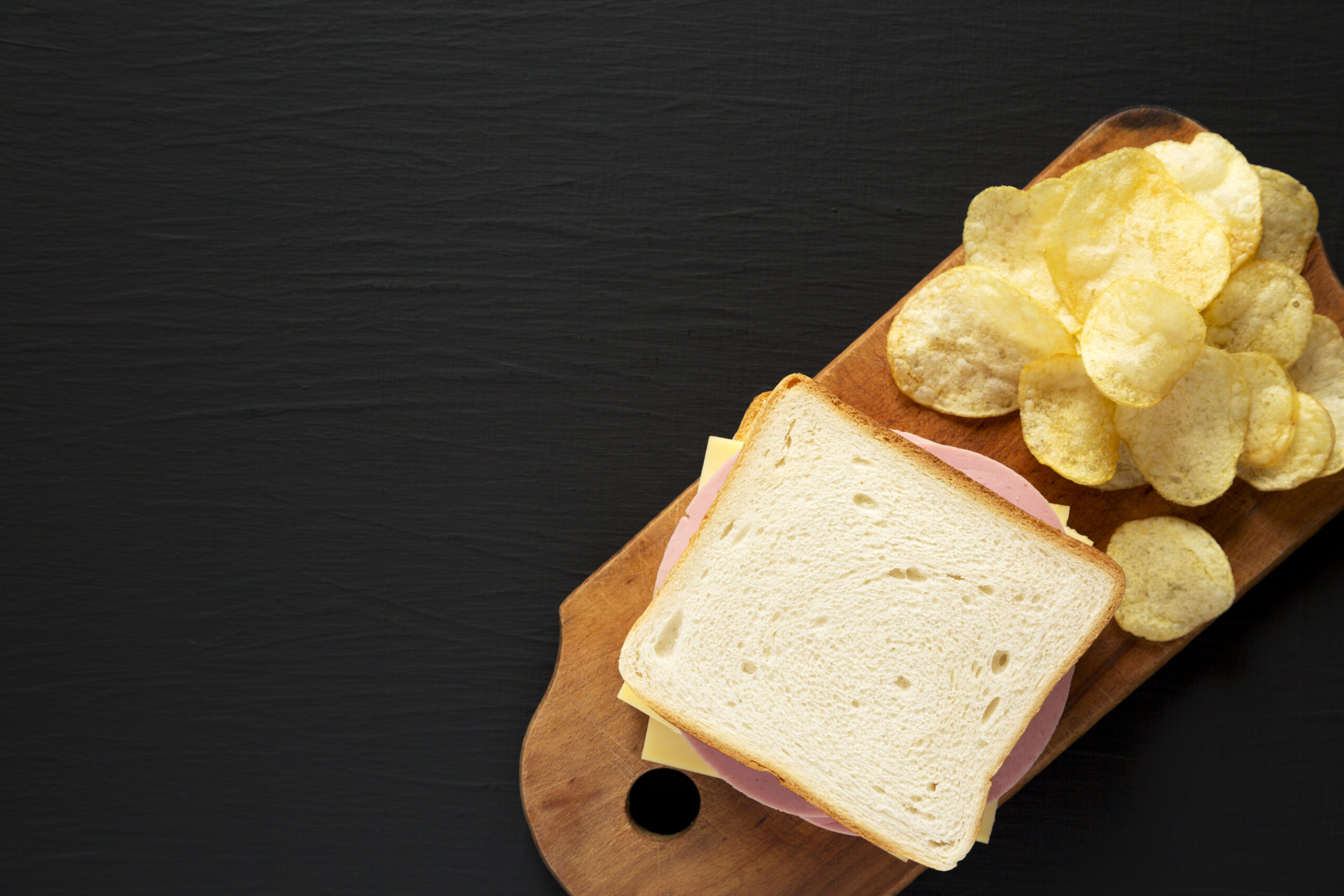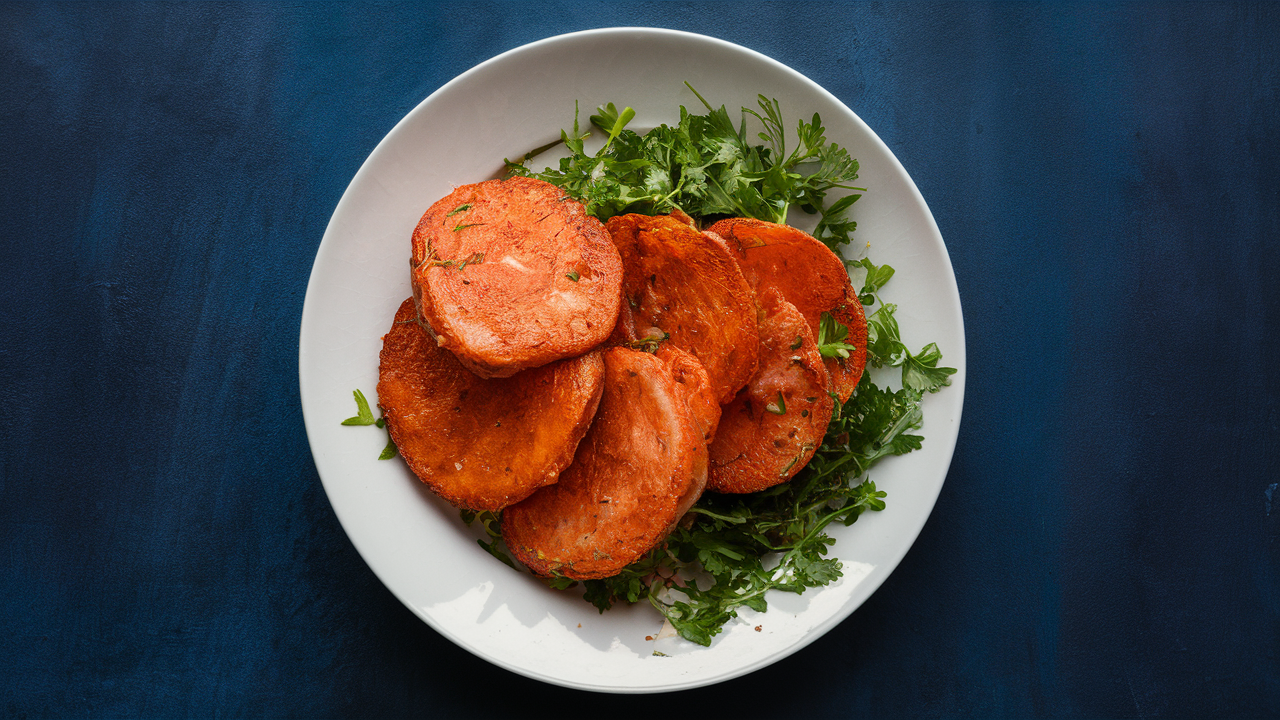Introduction to Fried Bologna
The Cultural Roots of a Southern Staple
Fried bologna, a dish with deep ties to Southern and Appalachian culinary traditions, stands as a testament to the region’s history and culture.
Its unmistakable aroma and sound signify a simple yet profound culinary experience, deeply ingrained in the local gastronomy. This staple extends beyond mere sustenance, embodying the warmth of community and the comfort of home.
In every sizzle and pop in the skillet, fried bologna narrates tales of the past, where simplicity in cooking was cherished.
This practice, handed down through generations, has turned the humble bologna from a basic lunchbox filler into a centerpiece of Southern cuisine. Each golden-brown slice is a celebration of regional flavors, connecting people to their heritage with every bite.
Thus, fried bologna persists not only as a beloved food but also as a symbol. It encapsulates a way of life where sharing a meal is a form of communion and every kitchen is a trove of stories waiting to be told.
The tradition of frying bologna varies from home to home, yet the spirit of this dish unites all—serving as a delicious homage to the rich tapestry of Southern comfort food.
What is Bologna?
Unwrapping the Story of a Deli Favorite
Bologna springs from the Italian city of the same name, with a rich history rooted in the Roman Empire. Its American cousin takes inspiration from Italian mortadella, known for its finely ground pork and distinctive spices. Makers of American bologna select pork, beef, chicken, or turkey, mixing them into the familiar smooth-textured deli meat we know today.
As we explore variations like Lebanon bologna, we encounter a smoked, tangier flavor profile. This type stands apart from the milder American bologna and the richly spiced mortadella. Together, these variants chart a course of culinary evolution, from old-world elegance to modern-day comfort food.
Each variant, be it served chilled or fried to golden perfection, carries forward a tradition of adaptation. They collectively paint a picture of a simple yet versatile food, embedded in cultural exchange and innovation.
Cooking Techniques

Mastering the Skillet Fry
Skillet frying bologna is an art that delivers a delightful mix of textures: crisp edges with a tender center. Begin by heating your skillet, preferably cast iron, to a medium-high temperature. A hot pan ensures a well-seared bologna slice with a satisfying crunch.
As the pan heats, consider slicing notches around the bologna’s edge. These cuts prevent the meat from curling up as it fries. Add a small amount of oil or butter to the skillet for flavor and to stop sticking. Once it shimmers or the butter begins to brown, you’re ready to add the bologna.
Lay the slices in the skillet without overcrowding them. Overloading the pan can lower the temperature, leading to uneven cooking. Give each slice space, and they will fry up perfectly. Cook each piece until it reaches a golden-brown hue, then flip it confidently. The second side often cooks quicker, so keep an eye on it.
As each slice finishes, transfer it to a plate lined with paper towels. This step absorbs excess grease, ensuring your bologna isn’t oily. The result should be slices that boast a crispy exterior, encasing the classic savory flavor within. Pair with bread and your favorite condiments, and enjoy a traditional treat that always satisfies.
In summary, achieving perfect skillet-fried bologna hinges on three key elements: a preheated skillet, strategic notching to prevent curling, and attentive flipping for even cooking.
By following these tips, you can enjoy a delicious result that’s crispy on the outside and tender on the inside. Pair your fried bologna with fresh bread and condiments for a satisfying, classic dish.
Air Fryer Method
Embracing Healthier Frying Techniques
The air fryer offers a modern twist to frying bologna, using hot air instead of oil. First, preheat your air fryer to the recommended temperature—usually around 375°F. This step is crucial for a uniformly cooked and crispy outcome.

Next, prepare your bologna slices by scoring the edges. This prevents them from puffing up and ensures they fry flat. Now, place the slices in the air fryer basket in a single layer to allow for optimal air circulation. The space around each slice is key for that evenly fried finish.
Fry the bologna for a few minutes. The exact time may vary depending on your air fryer model and how crispy you like your meat.
Typically, a few minutes per side should suffice. Flip the bologna halfway through the cooking time to ensure both sides crisp up nicely.
The air fryer’s magic lies in its ability to mimic the texture and flavor of traditional frying while using little to no oil. This means you get all the deliciousness of fried bologna with fewer calories and less fat. It’s a win-win for flavor and health.
As the bologna finishes cooking, let it rest for a moment before serving. This allows the slices to cool slightly and firm up, achieving that perfect crunch. Now, you’re ready to enjoy your healthier fried bologna, perhaps in a sandwich or as a stand-alone treat.
In short, air frying is a superb method for those looking to enjoy fried foods with a health-conscious approach. It keeps the essence of what makes fried bologna a delight but with a lighter touch.
Nutritional Considerations
Balancing Taste and Health with Fried Bologna
Fried bologna, while delicious, presents certain nutritional challenges that are worth considering. Typically made from processed meats, bologna can be high in sodium and saturated fats. It’s important to understand its makeup to incorporate it wisely into a balanced diet.
Firstly, bologna is usually crafted from a mix of pork, beef, or turkey. These proteins provide essential amino acids, but the processing involved can add less desirable elements like sodium nitrate.
This compound helps preserve the meat but has been linked to certain health risks when consumed in large quantities. Moderation is key here.
Moreover, the frying process itself can increase the calorie and fat content of bologna, especially if cooked in oil.
However, using modern methods like air frying significantly reduces the amount of added fat, making it a healthier choice without sacrificing the crispy texture that makes fried bologna so appealing.
For those looking to enjoy fried bologna while maintaining a healthy diet, consider serving it with sides rich in nutrients. Pairing it with a fresh salad, steamed vegetables, or whole grains can balance the meal.
This approach allows the enjoyment of fried bologna’s savory flavor while keeping your overall dietary intake well-rounded.
Additionally, choosing bologna made from leaner meats and without added sugars or fillers can help mitigate some health concerns. Always check labels for nutritional content and opt for brands with transparent ingredient lists.
In conclusion, while fried bologna is not the healthiest option out there, it can fit into a balanced diet when consumed occasionally and paired with healthier foods. Always consider the method of cooking and the quality of the meat to make smarter dietary choices. This way, you can indulge in this comfort food while taking care of your nutritional needs
Culinary Tips and Tricks
Enhancing Flavor and Texture in Fried Bologna
To elevate the taste and ensure a crispy texture when frying bologna, start with the quality of the meat. Opt for higher-quality or artisanal bologna, which often contains fewer fillers and more natural flavors. This choice alone can significantly improve the outcome of your dish.
Preventing the bologna from curling up as it fries is a common challenge. To tackle this, make small cuts around the edges of the bologna slices before frying. These notches help the meat stay flat in the pan, ensuring even cooking and optimal crispiness. Additionally, these cuts prevent the edges from becoming too tough, which can detract from the overall texture.
For those looking to boost the savory flavors of bologna, consider seasoning the slices before they hit the skillet. A light sprinkle of garlic powder, paprika, or even a dash of cayenne pepper can add depth to the bologna’s flavor profile. Experimenting with these spices will not only enhance taste but also tailor the dish to your preference.
Moreover, choosing the right fat for frying can make a difference. While butter offers a rich flavor, it can burn quickly. A mixture of butter and oil, or simply using a high-smoke-point oil like canola, might be better options to achieve that desirable golden crust without burning.
Finally, serve the fried bologna immediately after cooking to enjoy its best texture. Letting it sit too long can cause it to lose its crispiness. Pairing it with contrasting textures, such as crispy lettuce or a soft bun, can also enhance the eating experience by balancing the mouthfeel.
By following these tips, you can master the art of frying bologna, turning a simple meat into a gourmet delight with just a few tweaks and techniques.
Serving Suggestions
Creative Ways to Enjoy Fried Bologna
Fried bologna is versatile, making it an excellent addition to various dishes. A classic way to serve it is in a sandwich, which is both simple and delicious. Place slices of fried bologna on buttered toast, topped with yellow mustard or mayonnaise, and perhaps a slice of cheese. For a crunch, add lettuce or tomato slices.
Additionally, fried bologna can elevate breakfast dishes. Include it alongside eggs and hash browns for a hearty meal, or chop it into bits and mix into an omelet for extra flavor and texture.
For a lunchtime twist, consider adding fried bologna to a grilled cheese sandwich. The crispy bologna adds a savory depth to the melted cheese, creating a comforting and filling meal. You could also use it as a pizza topping for a unique flavor combination, complementing classic ingredients like mozzarella and tomato sauce.
Lastly, fried bologna works well as part of a larger dinner plate. Serve it with sides of mashed potatoes and steamed vegetables for a satisfying meal that balances the richness of the meat with lighter, more nutritious sides.
By incorporating fried bologna into these dishes, you can enjoy its unique flavor in various enjoyable and satisfying ways.
FAQs
Common Questions About Bologna
Is it safe to eat bologna raw?
Yes, it is safe to eat bologna raw. Bologna is a cooked meat, typically smoked and cured, making it ready to eat straight from the package. This preparation method ensures that bologna is safe to consume without additional cooking.
Does bologna need to be cooked?
While bologna does not need to be cooked for safety reasons, many people prefer to cook it, especially by frying, to enhance its flavor and texture. Frying bologna can add a crispy edge and a richer taste, making it a popular choice for sandwiches and other dishes.
How should you store bologna to ensure it remains fresh?
To keep bologna fresh, store it in the refrigerator immediately after purchase. Keep it in its original packaging until use, or transfer it to an airtight container or resealable plastic bag. Properly stored, bologna can last for up to two weeks in the fridge. For longer storage, bologna can be frozen for up to two months, though this may affect its texture.
Can you freeze bologna?
Yes, you can freeze bologna. Freezing can extend its shelf life but may slightly alter its texture. To freeze bologna, wrap it tightly in plastic wrap or aluminum foil and place it in a freezer bag, squeezing out as much air as possible. Label and date the packaging for future reference.
These answers should help clarify the safety, cooking preferences, and storage practices for bologna, ensuring you can enjoy this versatile meat safely and deliciously. Whether you choose to eat it straight from the package or fry it up, bologna remains a convenient and tasty option.
Conclusion: Celebrating Fried Bologna
Fried bologna, a humble yet beloved dish, stands out for its simplicity and comforting qualities. As we’ve explored, this versatile meat can be enjoyed right out of the package or transformed into a crispy, savory treat through frying. Its rich flavor and ease of preparation have cemented its place in both Southern and Appalachian culinary traditions, making it a favorite across many American households.
Whether tucked between slices of bread for a classic sandwich, mixed into an omelet for a hearty breakfast, or served alongside dinner favorites, fried bologna adapts to suit any meal. The cooking tips and nutritional advice provided aim to enhance your cooking experience, ensuring that each slice of bologna is prepared to perfection.
By understanding how to handle and cook bologna safely, you can enjoy this delicious meat in various delectable forms without compromise.
In embracing fried bologna, we not only indulge in its delightful taste but also connect with a piece of culinary heritage that continues to bring comfort and satisfaction to many.
Let this guide inspire you to explore the many possibilities that bologna offers, making it a celebrated addition to your cooking repertoire.


2 thoughts on “Is it okay to fry bologna?”